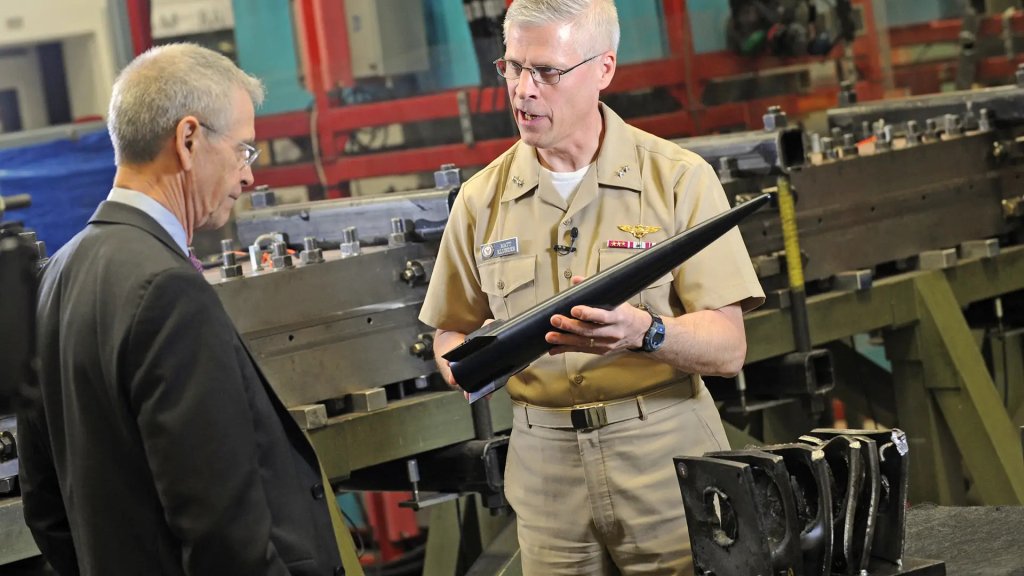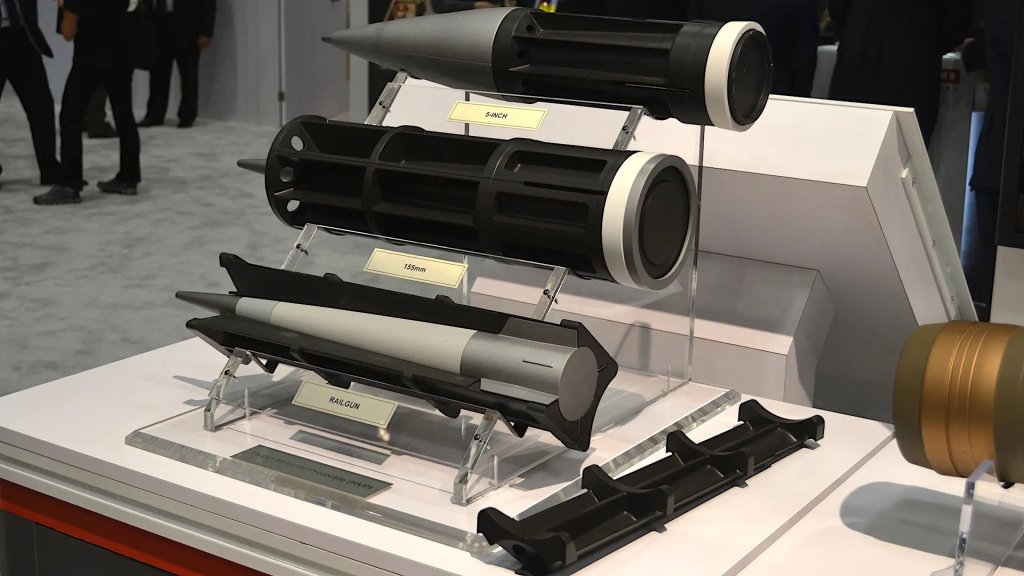The U.S. Army says it is planning to award a sole-source contract to BAE Systems to produce a prototype self-propelled 155mm howitzer for use as a novel air and missile defense system. The goal is for the Multi-Domain Artillery Cannon (MDAC) to be able to knock down drones and cruise missiles, as well as traditional aircraft and helicopters, using hyper-velocity ammunition originally developed for the U.S. Navy’s canceled electromagnetic railgun program.
The Army’s Rapid Capabilities and Critical Technologies Office (RCCTO) announced its intention to hand BAE an MDAC deal via an Other Transaction Agreement (OTA) on December 20. This is a novel contracting mechanism designed to help U.S. government agencies accelerate advanced research and development and prototype efforts.

RCCTO, in cooperation with the U.S. Air Force, has been pushing ahead with plans for MDAC since at least 2022. The MDAC effort is also leveraging similar work the Pentagon’s Strategic Capabilities Office (SCO) has been doing in cooperation with the Air Force Research Laboratory (AFRL) as part of a project called the Hypervelocity Ground Weapon System (HGWS). The current goal is to have a complete prototype MDAC battery on hand by the fourth quarter of Fiscal Year 2027 and then conduct an actual operational demonstration of the capability in Fiscal Year 2028.
“A full MDACS Battery consists of eight (8) Multi-Domain Artillery Cannons (MDAC), four (4) Multi-Function Precision Radars (MFPR), two (2) Multi-Domain Battle Managers (MDBM), and separately, no less than 144 Hypervelocity Projectiles (HVP),” according to the latest RCCTO contracting notice. “The MDACS mission is to defend Joint Force fixed and semi-fixed locations against attack by a broad spectrum of Unmanned Aerial Systems (UAS), Cruise Missiles (CM), Fixed Wing (FW), Rotary Wing (RW), and other advanced air and missile threats and to complement existing air and missile defenses by operating in integrated operational scenarios.”
The contracting notice from RCCTO does not provide any details about BAE’s proposed MDAC design or about any of the other planned elements of the prototype battery. The War Zone has reached out to BAE for more information.
The Army has called for a wheeled 155mm howitzer design in the past to meet its MDAC requirements, according to a Request for Information (RFI) notice the service put out in July. The RFI also laid out demands for “remote weapon firing capability,” “high rates of fire with [the] HVP,” “deep magazine capacity,” and “rapid ammunition resupply time (manual and automated).” MDAC has also been depicted as being able to fit inside a C-130 cargo plane in the past, as seen below, which would add to its flexibility in future expeditionary and distributed operations.

The Army’s MDAC stipulations do raise the question of whether BAE’s MDAC could be based on the Archer self-propelled 155mm howitzer, which is notably not C-130 transportable in its current form. Developed by Bofors in Sweden, which is now a BAE subsidiary, Archer does however feature an auto-loader that feeds from 21-round a magazine. Per the manufacturer, the crew can emplace the howitzer from within the safety of its armored cab within 14 seconds, fire an initial round within 23 seconds, and pack back up to move after firing three more rounds within 74 seconds. These capabilities would align well with an air defense role requiring relatively rapid shots against multiple targets. The Army is also set to evaluate Archer as a possible new self-propelled 155mm howitzer for use as a traditional artillery piece as part of its Self-Propelled Howitzer Modernization (SPH-M) effort.

BAE Systems could also be developing a completely new design to meet the MDAC requirements. As seen earlier in this story, the Army and the Air Force have shown a notional MDAC system in the past with a chassis that looks to be based on a 6×6 member of the Family of Medium Tactical Vehicle (FMTV) series of trucks. Currently manufactured by Oshkosh Defense, the FTMV is one of the truck families in widespread Army service today.
It is unclear whether or not the Multi-Function Precision Radar (MFPR) and the Multi-Domain Battle Manager (MDBM) portions of the MDAC battery will be entirely new systems, or include existing capabilities and/or ones the Army is already in the process of acquiring. “The MDAC will interface with an external… Command and Control Battle Manager (C2BM) and the Integrated Air and Missile Defense (IAMD) Battle Command System (IBCS),” according to the July RFI. ICBS is a new overarching air and missile defense-focused network architecture the Army is in the process of fielding now, which you can read more about here.

When it comes to the HVP ammunition, as already noted, this was developed as part of the U.S. Navy’s abortive electromagnetic railgun program. BAE developed the HVP, which looks to have given the company a leg up when it comes to the MDAC program. “RCCTO believes BAE Systems Land & Armaments L.P. is the only responsible source capable of developing and delivering both the MDAC and HVP prototypes within the required schedule; competition of this effort is not practicable and will not meet mission fielding requirements,” the recent sole-source contracting announcement declares.

The original HVP round was a hit-to-kill kinetic projectile designed to destroy targets simply by smashing into them after reaching a reported peak speed of 5,600 miles per hour. However, plans were already presented years ago now for versions with high-explosive warheads that 155mm howitzers and 5-inch naval guns could fire out to maximum ranges of 17 or 40 nautical miles, respectively.


The HVP was also always envisioned as being able to engage aerial threats, as well as targets on land and at sea. In 2020, an Air Force-led test demonstrated the ability of a 155mm howitzer to knock down a BQM-167 target drone serving as a surrogate for a subsonic cruise missile with an HVP. U.S. military budget documents show plans at least for other more recent MDAC/HGWS test events, but what, if any results they produced are unclear.


Work on MDAC now comes amid an ever-expanding and evolving aerial threat ecosystem facing U.S. military forces deployed downrange, as well as in their home garrisons. A growing array of ever more capable armed drones and cruise missiles in service with near-peer competitors, especially China, as well as smaller countries and even non-state actors present particular concerns for America’s armed forces. Larger and longer-ranged kamikaze drones are also steadily blurring the lines between uncrewed systems and traditional cruise missiles.
Though drone and cruise missile threats are not new, as The War Zone regularly notes, the ongoing war in Ukraine, as well as crises in and around the Middle East in the past year or so, have re-emphasized the need for the development of new defensive capabilities. It is in this context that the Army is looking at MDAC as one way to provide a new, readily deployable air and missile defense capability that is also lower cost to employ than traditional surface-to-air missile systems. In the past, the per-round cost of BAE’s HVP has been estimated to be $100,000 or less. Even current short-range man-portable Stinger surface-to-air missiles cost around $400,000 apiece, while upper-tier long-range interceptors like the PAC-3 Missile Segment Enhancement (MSE) for the Patriot system have unit prices in the millions of dollars.

It is important to stress that if MDAC does enter operational service in the future it would be deployed as part of layered defensive architecture and would not be able to provide all-around air and missile defense by itself in complex threat scenarios.
The Army’s work on MDAC also comes amid questions about the future of burden sharing between it and the Air Force when it comes to air base defense, both downrange and domestically. Since the Air Force was split off from the Army in the late 1940s, the latter service has retained the lead responsibility to protect airfields against aerial attack. Just this year, Air Force officials publicly questioned whether this division of roles and missions makes sense going forward.
“We know that, doctrinally, the Army has taken responsibility since the 1940s for air base air defense. We may have some questions on that,” Dr. Ravi Chaudhary, Assistant Secretary of the Air Force for Energy, Installations, and Environment, said during a virtual talk the Air & Space Forces Association hosted earlier this month regarding the rollout of a new base modernization strategy. “We may want to enter in a broader discussion on what that’s going to look like going forward, because right now, the threats are so localized and so tactical that we may want to have a broader discussion … and take on some of those mission sets going forward.”
“Frankly, I would be comfortable with the Department of the Air Force taking on the total defense/local defense of air bases as an organic mission, if the needed resources – human and financial, etc – were made available,” Secretary of the Air Force Frank Kendall had also said during a keynote speech at the Airlift/Tanker Association’s (ATA) annual symposium in November.
In the meantime, the Army is pressing ahead on MDAC, now with the planned sole-source deal with BAE Systems, and the goal of demonstrating this relatively exotic air and missile defense capability before the end of the decade.
Contact the author: joe@twz.com
